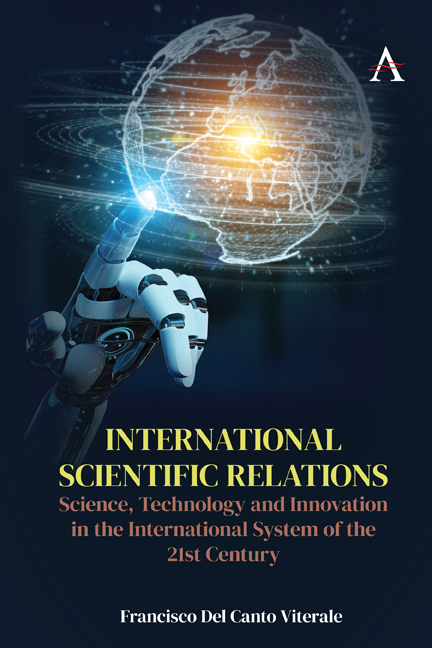 International Scientific Relations
International Scientific Relations 4 - Relations
Published online by Cambridge University Press: 08 October 2021
Summary
The new international context characterized by an extraordinary scientific and technological revolution, the expansion of the phenomenon of globalization, and the unprecedented development of information, communication, and transportation technologies is stimulating a constant increase in the relations and interactions between all the actors of the international system, which suggests a future scenario where the number and the diversity of the interconnections will multiply exponentially.
This same reality can be observed in the field of ISR, where the reevaluation of scientific knowledge as a strategic resource and the renewed interest of old and new international actors in STI are shaping a new global structure with new means and a larger quantity of interactions and relations between different actors. Currently, if possible, observing an expansion in the number, nature, and reach of the interactions between the different actors and places of knowledge production leads not only to more knowledge being produced but also to the acceleration and intensification of connectivity.
The main objective of this chapter is to identify the main interactions and relations that are generated between the major actors of ISR and to describe their main characteristics, because, as Strange (1994) points out, a large part of the researcher's job is “trying to unravel the complex network of overlapping, symbiotic or conflictive authorities that can be found in any sector or any time we are asked who gets what.”
Interaction and Relation Mechanisms
The huge contact, link, and interaction network that exists in the field of ISR among the many international actors comprise a huge network of relations (Dagnino and Thomas, 1999), which we see represented the main economic and political interests of the actors involved in scientific and technological activities, who can either be producers, consumers, or funding agencies. Within this network, a process of reciprocal influences between all these actors takes place, where these interactions generate a breeding ground in which values are shared at the same time that research priorities are established. In the configuration of this relationship matrix, policies are defined and the allocation of resources that define the fields of relevance, the research trends, the specific weight of the different areas of research, the priorities, and even the criteria of quality are decided.
- Type
- Chapter
- Information
- International Scientific RelationsScience, Technology and Innovation in the International System of the 21st Century, pp. 71 - 100Publisher: Anthem PressPrint publication year: 2021
